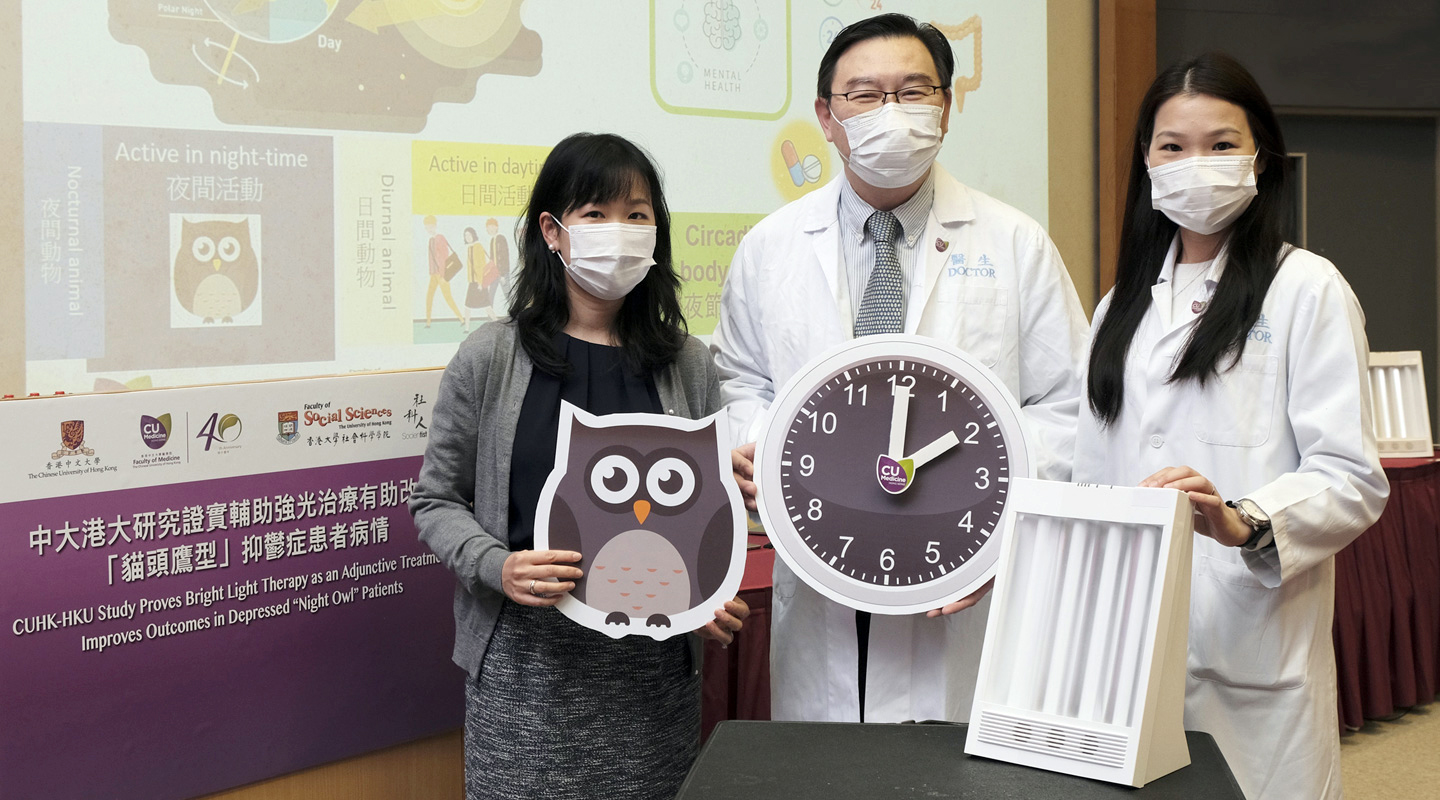Dear readers, With the launch of e-newsletter CUHK in Focus, CUHKUPDates has retired and this site will no longer be updated. To stay abreast of the University’s latest news, please go to https://focus.cuhk.edu.hk. Thank you.
Shedding ‘Light’ on Depression
Study proves bright light therapy effective for ‘night owl’ patients with depression

The Department of Psychiatry of CU Medicine, in collaboration with the Department of Psychology at the University of Hong Kong, conducted the world’s first randomized controlled trial of adjunctive bright light therapy for ‘night owls’ with depression.
The term ‘night owls’ refers commonly to those who are late to bed and late to rise. These types of people are more susceptible to sleep disturbances and depressive episodes. ‘In one of our previous studies on patients from psychiatric specialist out-patient clinics, about 20% of them who suffered from depression were classified as “night owls”,’ said Dr. Joey Chan, an associate professor from the Department of Psychiatry of CUHK. ‘Despite receiving conventional psychiatric treatment, they were more likely to have higher suicidality and non-remission of depression.’
‘Depression is a very common mental health problem with detrimental consequences,’ said Prof. Wing Yun-kwok, chair of the Department of Psychiatry. ‘As there has been increasing evidence advocating the therapeutic effects of bright light treatment for both depression and circadian-related disorders, our team strives to develop effective and novel treatments that can improve the clinical outcomes of patients in these regards.’
To put it in a nutshell, bright light therapy is a way to treat depression by exposure to artificial light. During the light therapy, patients are asked to sit or work near a device called ‘light therapy box’, which gives off bright lights that mimic natural outdoor light.
With the above principle in mind, the joint study was conducted in the following manner: a total of 93 middle-aged ‘night owl’ patients (mean age of 46 years, 80% female, with habitual bedtimes and rise times at around 2 a.m. and 10:30 a.m., respectively) were invited to join the study. The patients were assigned to either the intervention group or the control group. In the intervention group, patients received bright light therapy for 30 minutes a day at home for five weeks via a light box. The start time of the bright light therapy was gradually advanced over the five-week treatment period. On the other hand, the control group was allocated to receive five weeks of dimmer light with the same advancement protocol. All patients were subsequently followed up for five months after the treatment.
Upon compiling and analyzing the data, the research team found that bright light therapy doubles the probability of achieving remission, with the cumulative remission rate of depression reaching 67.4%. They also observed that the patients’ sleep patterns were changed to earlier bedtimes and rise times upon receiving the treatment. ‘Bright light therapy with gradual advancement in start time produced a more rapid and higher cumulative rate of remission than the control group, and doubled the probability of achieving remission, ‘explained Dr. Chan. ‘In addition, bright light therapy did not induce adverse side effects or interaction which are often associated with psychotropic medications. Hence, bright light therapy is a remarkable and effective treatment especially for patients who cannot tolerate psychotropic medication.’
Professor Wing concluded, ‘This study shows that using properly timed bright light as non-pharmacological interventions has an important place in the treatment of depression. The research findings are very encouraging, and we are looking forward to further exploring the application of bright light therapy and other circadian-related chronotherapeutic measures in different psychiatric disorders and specific patient groups.’
Results of this study are reported in the international medical journal Psychological Medicine.